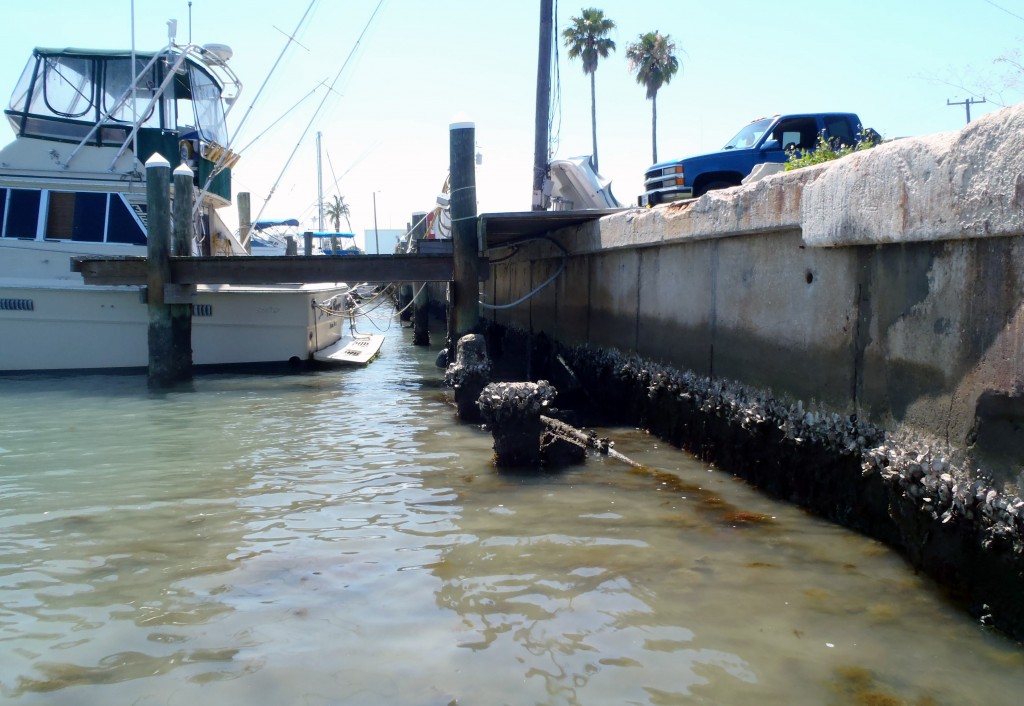by Katrina Lohan
Our second sampling location was a sea wall adjacent to a marina just below the south bridge in Ft. Pierce. The water was shallow enough along the wall that we were able to get out of the boat and stand in front of the wall, which made hammering and scraping the oysters off of it much easier!Just as before, finding enough Crassostrea virginica oysters was easy, but finding the other oysters…took a lot more scraping. The Isognomon sp. at this location were fairly small and tucked into the crevices created by C. virginica, so they could be harder to spot. I took a step-wise approach, collecting the easiest species first, then making sure I had enough Isognomon sp., and only then did I move on and attempt to locate Ostrea sp., which easily took up the majority of our time. Most of the individuals in this species were dime-sized or smaller, tucked into the crevices or even in the dead shells of other oyster species, and they were covered in turf algae and mud. It took me (and the others) about an hour to find a sufficient number of these little guys at each of our respective sampling sites along the wall.
The funniest part of sampling along this wall was that there were lots of people around who did not hesitate to yell out! I am grateful to the multiple individuals who were concerned for our safety and mentioned the pilings in the water near the wall. (The water was clear enough to see them and we walked very slowly. Also, we all wore hard-bottomed water shoes and thick gloves.) We also had multiple boaters that were traveling in and out of the marina ask what we were doing, though I think some of them probably thought that we were just there to clean off the seawall!
Once all the oysters were collected, I took one water and one subtidal sediment sample and put them on ice. Then it was back to the lab to process more oysters.


